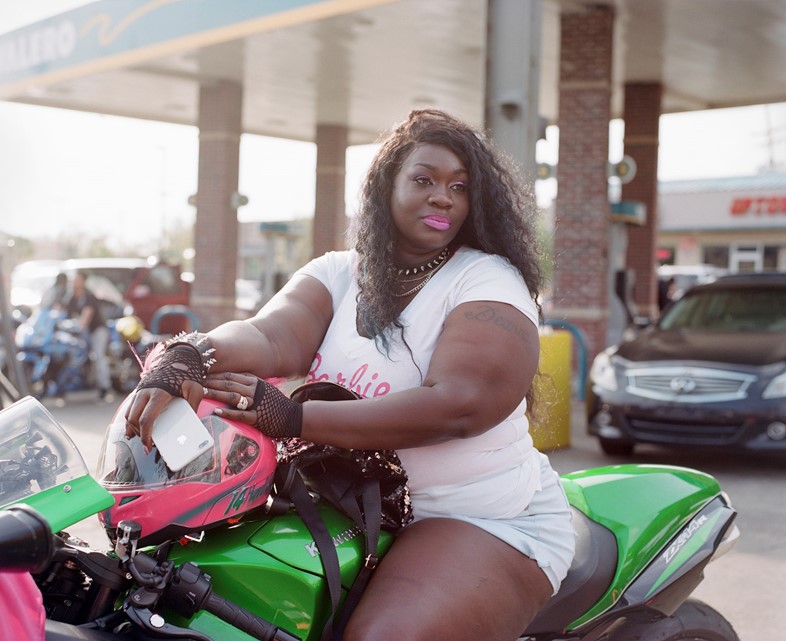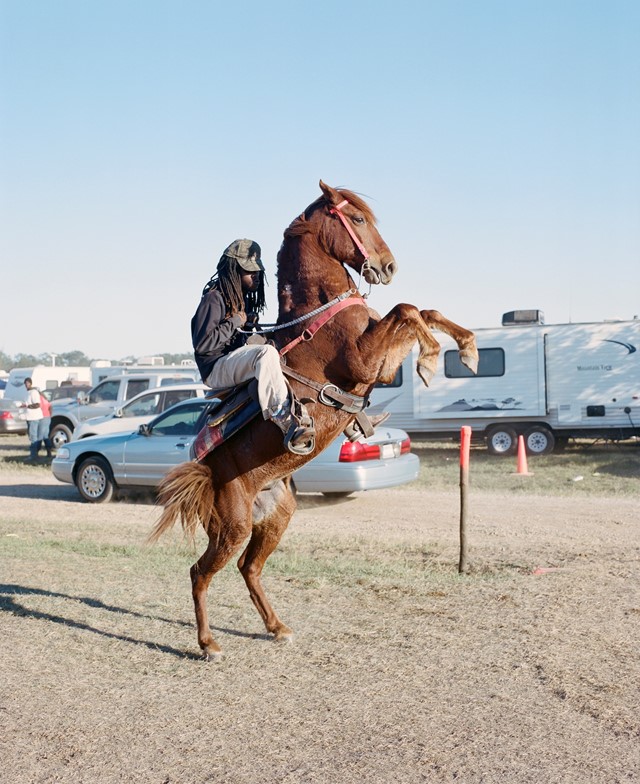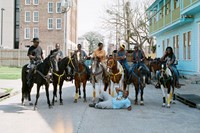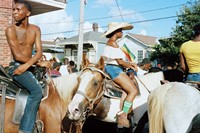Akasha Rabut’s new book Death Magick Abundance documents the people that brought New Orleans back to life after the devastation of Hurricane Katrina, and is a pertinent celebration of the power of community
In 2005, Hurricane Katrina decimated New Orleans – but the true horror lay in the government’s failure to protect the city’s people, resulting in some 1,200 deaths. Catastrophe struck in the storm’s aftermath, with over one million people from the central Gulf Coast displaced across the United States, some still stranded in FEMA-provided trailers more than five years after the storm. But over time, the people of New Orleans returned home, rebuilding their city and restoring the culture to its glory.
“A connection that was made through this trauma with each other. It’s forced them to be really creative. Living through that really inspires people. I feel like they are luminaries,” says photographer Akasha Rabut, author of the new book, Death Magick Abundance (Anthology), a mesmerising portrait of the post-Katrina generation in New Orleans made over the past decade. “People here live everyday like it’s their last day and that’s beautiful to me. Everybody here is very friendly and there’s a real sense of community. We have a lack of infrastructure here and the people are the ones taking care of each other.”
Rabut began making photographs while living on a Second Line parade route, seeing the splendour of the culture flourishing every Sunday. With its origins in West African dance, the enslaved brought the Second Line parade tradition to New Orleans and passed it along to their kin, who transformed it into a ritual for processions and parades like Mardi Gras, celebrations, and funerals. Today there are usually Second Line parades of varying sizes each Sunday in the city.
“Second Line culture is about participation – you don’t go there to watch,” Rabut says. “People are selling liquor on the streets out of ice chests. Horseback riders are everywhere. People are riding motorcycles, burning out. The police are there but it feels like they are there to protect the Second Line.”
It was at the Second Line that Rabut met the Caramel Curves and the Southern Riderz, two local clubs featured prominently in the book, the former an all-female black motorcycle club, the latter a group of urban cowboys. She spent five years with each club, getting to know the women motorcyclists and the male horseback riders as friends and family. Using a medium format camera, able to only make ten frames per roll, she worked with great precision and intentionality to create images that evoke New Orleans’ heart and soul.

“I am aware the camera can be a tool to capture something but it’s way more important to me to experience what’s happening in the world,” Rabut says. “Everytime I photographed the Caramel Curves I felt like, ‘I cannot believe how blessed I am to be here with these women.’ The motorcycle world is male dominated and seeing these really feminine women ride these masculine bikes and have so much control over them. Also seeing them interact with each other – it’s a beautiful sisterhood.”
Rabut also met the Southern Riderz at a Second Line. “There are black cowboys all over the United States: they’re in Philly, Baltimore, and Compton and they’ve been around for a long time,” Rabut says. “I think the ones in New Orleans are the luckiest because get to bring their horse out to a Second Line, dance to bounce music, and be out in the street. This city is so full of music, joy, and culture.”
Death Magick Abundance is a testament to the triumphant spirit of the people who refuse to be vanquished by a government that abandoned them. “Many things die for growth to happen and that’s the magic. When growth happens, abundance is inevitable. It’s the cycle of death to life: shed the old to begin the new and abundance is our destiny,” Rabut says. “It’s interesting that this book came out in the time of a pandemic. I keep looking at this book thinking, ‘Wow this is a group of people who are resilient. We are going to get through this together.’”

Death Magick Abundance by Akasha Rabut is out now, published by Anthology Editions.






